Two Teenagers DIED Following COVID-19 Vaccination. CDC Scrambles to COVER UP
Study that detailed sudden deaths in two teenagers following COVID-19 vaccination left officials scrambling.
One-time or recurring donations can be made through Ko-Fi:
By Zachary Stieber May 8, 2024
EXCLUSIVE: Inside the Study that Shook the CDC
Two teenagers died shortly after COVID-19 vaccination, experts reported in a study published Feb. 14, 2022. Within hours, federal officials scrambled to respond, worried the paper would harm their efforts to promote COVID-19 vaccines, internal emails show.
“This is important because this report has significant implications for CDC and FDA’s vaccine safety and policy discussions,” Dr. Sarah Reagan-Steiner, a medical officer at the U.S. Centers for Disease Control and Prevention (CDC), wrote on Feb. 17, 2022.
The CDC and the U.S. Food and Drug Administration (FDA) have repeatedly promoted widespread COVID-19 vaccination and downplayed confirmed and possible side effects of the vaccines.
Another CDC official claimed that not including CDC scientists as co-authors of the paper called into question the ethics of the experts who wrote it. The agency rapidly submitted a rebuttal to the journal that published the study.
The internal emails were obtained by The Epoch Times through Freedom of Information Act requests. Some are being reported in this article for the first time.
Combined with comments from two of the authors of the study, the emails shed fresh light on the paper—the first to detail examinations of American children who died with heart inflammation after COVID-19 vaccination—and its aftermath. The paper set off a firestorm within the CDC that led to attempts by agency officials to overrule the medical examiners who examined the boys.
The myocarditis manifested unusually in the teenage boys, Dr. James Gill, the chief medical examiner for the state of Connecticut, and two other experts wrote in the study. They said the injuries were similar to cardiomyopathy, which is often caused by extreme stressors.
“This postvaccine reaction may represent an overly exuberant immune response, with the myocardial injury mediated by similar immune mechanisms to those described with SARS-CoV-2 and multisystem inflammatory syndrome cytokine storms,” the experts said.
The boys were both found dead in their beds—one in Michigan and one in Connecticut—just days after receiving Pfizer-BioNTech shots. Each tested negative for COVID-19, the disease caused by the SARS-CoV-2 virus.
In one case, the heart injury may have started with an initial vaccine dose before healing and restarting with a second dose, although it was possibly from a genetic heart muscle disorder, according to the paper. The boy’s cause of death was listed on his autopsy as “myocarditis of uncertain etiology,” according to records reviewed by The Epoch Times.
The other boy was said to have possibly suffered inflammation after the heart muscle became enlarged. His cause of death was also determined to be myocarditis. The COVID-19 vaccination was also listed as a cause of death on his death certificate, according to Dr. Gill.
The clinical histories of the boys suggested that acute heart injuries were the primary factor in the deaths, the authors said.
CDC Invited
The CDC became involved in the investigations into the boys’ deaths at the request of the medical examiners.
“I wanted to make sure that we weren’t dealing with some sort of infectious disease that would cause inflammation in the heart,” Dr. Randy Tashjian, a co-author of the paper, told The Epoch Times.
The CDC’s Infectious Diseases Pathology Branch (IDPB) had techniques that would enable them to rule out any potential infectious cause, added Dr. Tashjian, who examined the boy in Michigan and has never discussed the matter publicly.
Dr. Gill, who also sought the CDC’s help, said the agency is meant to assist pathologists and not make cause of death determinations.
“Their role was to test tissues that were sent to them for various pathogens. It is up to the submitting forensic pathologist in charge of the case to interpret those findings in the context of the clinical history, etc. Laboratories give us information but not conclusions,” he told The Epoch Times in an email.
“It is up to the submitting forensic pathologist in charge of the case to interpret those findings in the context of the clinical history, etc.,” he told The Epoch Times in an email. “Laboratories give us information but not conclusions.”
He added: “The analogous example is a toxicology lab. The tox lab may find cocaine and fentanyl but that does not mean the person died of an intoxication and a toxicologist would never make that determination. It is up to the forensic pathologists to put all the pieces together.
CDC officials detected the presence of Clostridium bacteria in multiple organs in the Michigan boy, and concluded that sepsis from the bacteria likely caused the boy’s death.
They also found parvovirus B19 in the heart of the other boy and concluded it was an alternative explanation for his myocarditis.
Those findings were not mentioned in the paper. The paper only mentioned the results from the CDC’s testing for COVID-19.
An email from Dr. Tom Shimabukuro, a CDC official, to the editor of the journal Archives of Pathology & Laboratory Medicine. (CDC via The Epoch Times)
55 Officials Notified
The paper was quickly circulated across the CDC and FDA, including to two of the CDC’s top vaccine safety officials. Fifty-five government employees received copies of the paper or links to it within three days of publication, according to messages obtained by The Epoch Times. Officials held meetings and discussed the paper in lengthy email chains. They drafted a formal response and figured out how to respond to media queries.
Officials said they didn’t know about the paper before it was published, and expressed concern that the paper neglected to mention most of the CDC’s testing results.
“There is both a scientific integrity issue (omitting relevant information) and an ethics issue (not including CDC scientists who participated in the evaluations as authors),” Dr. Tom Shimabukuro, the head of the CDC’s Immunization Safety Office at the time, said in one missive to colleagues.
“I did not notify the CDC that we were publishing the cases. There is no obligation to do so,” Dr. Gill, the lead author of the paper, told The Epoch Times in an email. “They did laboratory testing for us and that does not merit notification or inclusion as authors.”
Dr. Shimabukuro said in another message to the editor of the Archives of Pathology & Laboratory Medicine, the journal that published the paper, that “the authors chose to selectively present results from the CDC lab that supported their position and deliberately omit results that ran counter.” He added, “In the process, they have misrepresented CDC’s role and CDC’s overall findings, and potentially damaged CDC’s reputation for openness and transparency.”
“All I can say is that they were not ‘open’ to discuss anything with me when I contacted them,” Dr. Gill told The Epoch Times. “Their published letter was more damaging to the reputation of their lab than anything written in the case report.”
Dr. Shimabukuro, who has given false information about COVID-19 vaccine side effects and safety signals that have yet to be corrected, did not respond to a request for comment.
In a separate internal email, Dr. Shimabukuro wrote that he believed the cases involved Takotsubo syndrome, also known as the “broken heart” syndrome. He said the syndrome “almost exclusively occurs in post-menopausal women.”
After IDPB officials reached the sepsis determination for the Michigan boy and communicated the findings to Dr. Tashjian, he said he would keep them posted on his final conclusions in the case. Dr. Tashjian did not, even though the official cause of death determination differed from that of the agency. Dr. Tashjian regrets not keeping them informed.
“Had I given them a heads up that that was what was going to happen, I think it would have not been maybe so bitter of a back and forth between the two sides,” Dr. Tashjian told The Epoch Times.
Dr. Tashjian told the CDC’s Dr. Reagan-Steiner after the paper was published that he determined the cause of death for one boy was “myocarditis of unknown etiology” and avoided attributing it to sepsis because there was no “obvious GI [gastrointestinal] source of infection.” He said he had been planning to tell the CDC about the paper, thanked the CDC for helping test tissue from the boys, and hoped reactions to the paper were not “blown out of proportion.”
Dr. Gill, in an email to CDC officials, noted that while parvovirus was detected in the other boy, the histopathology did not support a viral source for the myocarditis. He also pointed out to Dr. Reagan-Steiner that Dr. Shimabukuro had shared confidential information with the editor of the Archives journal.
Dr. Reagan-Steiner forwarded the message to Dr. Shimabukuro, saying she would need advice on how and whether to respond. Dr. Shimabukuro told her he would “take this off your plate.”
“Any concerns you may have on this matter should be directed to the editorial office at the Archives of Pathology & Laboratory Medicine,” Dr. Shimabukuro told Dr. Gill.
Dr. Shimabukuro, who is not a pathologist, “stifled an academic discussion between two pathologists,” Dr. Gill told The Epoch Times.
‘Needs to Go Out ASAP’
After the paper was published, CDC officials quickly drafted a letter they described as a rebuttal and sent it to the Archives, which declined a request from The Epoch Times for an interview.
“We look forward to setting the record straight,” Dr. Shimabukuro wrote to the journal’s editor-in-chief after submitting a draft of the letter on Feb. 17, 2022. He noted that the letter needed to go through layers of clearance within the CDC.
That clearance process often takes weeks or even months, according to internal CDC records reviewed by The Epoch Times. In this case, the work was sped up.
The letter was marked as “urgent” internally. The letter “is needed rapidly to counter incompletely presented CDC results,” one CDC project listing stated.
“This has been moving like a runaway freight train today,” Dr. Reagan-Steiner, with the IDPB, wrote in an email on Feb. 16, 2022. Vaccine safety officials were “pushing for [clearance] in an exceptionally expedited manner,” she added.
“Sarah and I have been working like maniacs for the last 48 hours,” Dr. Christopher Paddock, another CDC pathologist, said the following day. He asked if officials were prepared to push the paper through clearance once it arrived soon.
“It needs to go out to the journal ASAP,” he wrote.
One of the officials who needed to review the paper asked to be informed when it was ready “and I will approve it ASAP.”
“I agree it is very important” to get the response published, another official said.
After the response was accepted by the journal, Dr. Paddock said in an internal email he was glad to see the development because it would acknowledge “the work we did to identify the actual cause of death” for the boy with bacteria in his system.
New CDC Email Tranche Contributed by Zachary Stieber (The Epoch Times) (Epoch Times)
Response Goes Live
The CDC response was published on April 8, 2022. Drs. Reagan-Steiner, Shimabukuro, Paddock, and other CDC officials listed as authors wrote that they read the study “with concern” because the paper excluded “thorough immunohistochemical and molecular testing performed by the CDC for each patient.”
The officials highlighted the parvovirus finding in one boy and said the virus can cause myocarditis, citing a 2003 paper. They also noted the CDC’s conclusion that sepsis from bacteria caused the other death.
“The report by Gill et al unfortunately omitted many important findings provided by pathologic evaluations at the CDC that suggested an alternate cause of death for patient A and identified a specific infectious cause of death for patient B. These omissions could lead incorrectly to the assumption that COVID-19 vaccines were directly responsible for the deaths of these 2 patients. We believe that providing these important pathologic findings will allow readers a fuller perspective of the causes of death in these cases,” the CDC officials said.
The step was taken even though the CDC considers determining a person’s cause of death the job of the official who completes the death certificate and the IDPB merely provides “consultation for analysis of tissue specimens,” according to a CDC statement emailed to The Epoch Times.
Drs. Reagan-Steiner and Paddock did not respond to requests for comment.
The CDC has falsely claimed that “the available evidence” shows the Pfizer and Moderna vaccines have “contributed to or caused” no deaths reported to the Vaccine Adverse Event Reporting System. Both the deaths detailed in the paper were reported to the system, which is managed by the CDC and FDA, and investigated by a CDC team.
Experts Respond
Dr. Gill and the other authors addressed the CDC’s response in a formal reply, saying that the CDC “unfortunately overstepped its role” by claiming to have ascertained the cause of death for one of the boys.
The CDC “misinterpreted common postmortem findings, including bacterial overgrowth,” they said, adding later that clinical history and cardiac findings do not support the sepsis attribution.
The authors acknowledged they should have mentioned the other boy tested positive for parvovirus but said other findings did not suggest his myocarditis had a viral cause, nor would the heart injury he suffered be explained by parvovirus infection. The detection of the virus, they said, “is an incidental finding.”
The CDC’s position was based on “limited data,” Dr. Tashjian told The Epoch Times.
“What they said made sense a little bit” but “not so much in the overall picture,” he said, adding that the agency “only had a portion of what I had, as far as information goes.”
Dr. Emily Duncanson, the other co-author of the paper, declined an interview request.
Dr. Tashjian said his goal was to provide “scientific and unbiased findings” on his case, alongside the case from Connecticut. He was aware the study would draw reactions, but found what ended up transpiring “a little bit shocking.”
The reactions were “pretty intense,” Dr. Tashjian said, causing anxiety and prompting him to for a while ignore anything related to the paper.
While interactions between the experts and the CDC turned tense after their findings were presented to the public, Dr. Tashjian said he doesn’t think CDC officials had any “nefarious intent” and just wanted to provide accurate information.
“I have no reason to believe that they were trying to purposefully obscure or mislead,” he said. “But, looking at it from an objective perspective, I think there was a lot riding on getting it correct.”
Source: theepochtimes.com
Related articles:





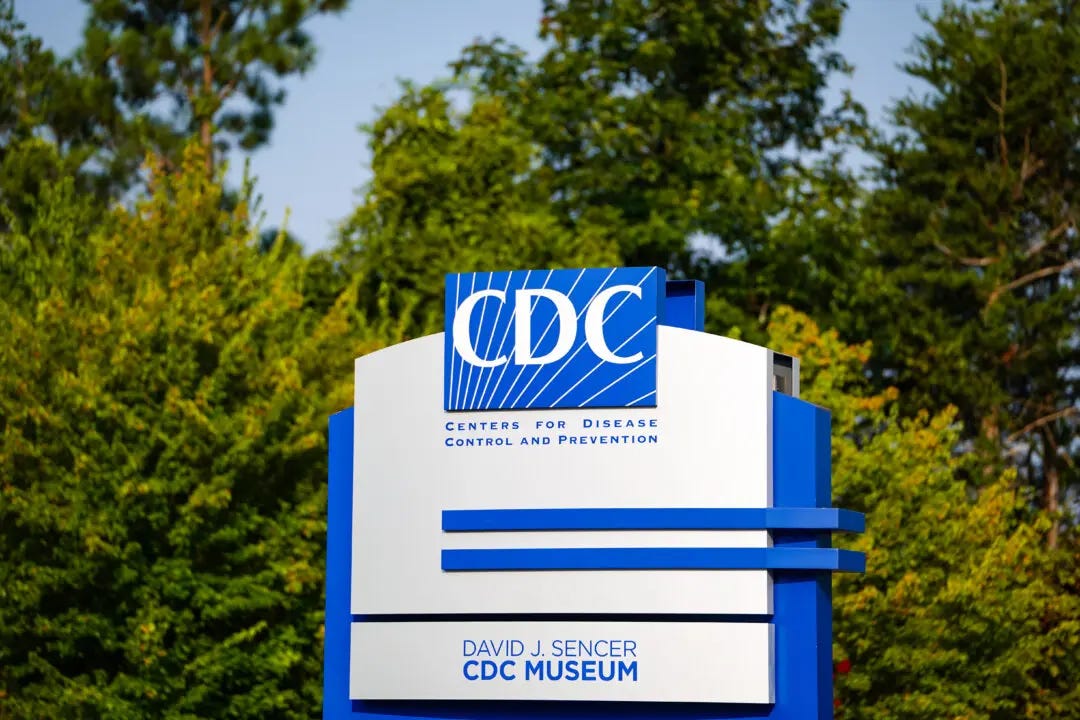
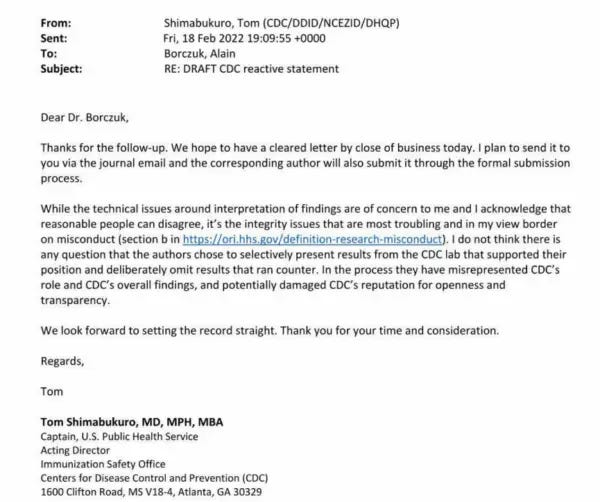

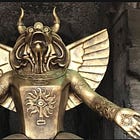
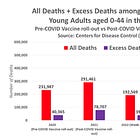



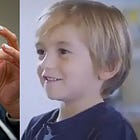
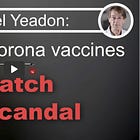
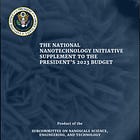
Two? Lol. How many thousands of deaths are listed in VAERS very soon after COVID vaccination.
As @ConlustroR was explaining in this Space: https://twitter.com/i/spaces/1ypJdkBeeDjGW
He was explaining how the vaxx injury coverup was done by calling "unvaxxed" people who died within 2 weeks of their Pentagon Juice injection, and then again if they died within 2 weeks after their 2nd poison dart, then they were "unvaxxed" again, since they were not "fully vaxxed", and on it goes.
Doctors have explained how filling out a VAERS report is extremely cumbersome, time consuming (doctors not paid for at least half an hour's time filling out a VAERS report), they've described how the report would time out and refresh after some 15-20 mins. time, so doctor would lose all the work he'd put into trying to fill out the VAERS report, doctors have spoken about how they would be questioned or threatened by their "medical" colleges if they did fill out a VAERS report, they've talked about how very obvious vaxx injuries reported to VAERS were often overturned... very few VAERS reports are ever completed by doctors due to the above reasons and others I haven't thought about, and as I was writing this, I'd remembered another point doctors had talked about related to VAERS reporting problems, but I forgot it, and it's not coming back to me just now... I'll try to come back to edit/add later if I remember.